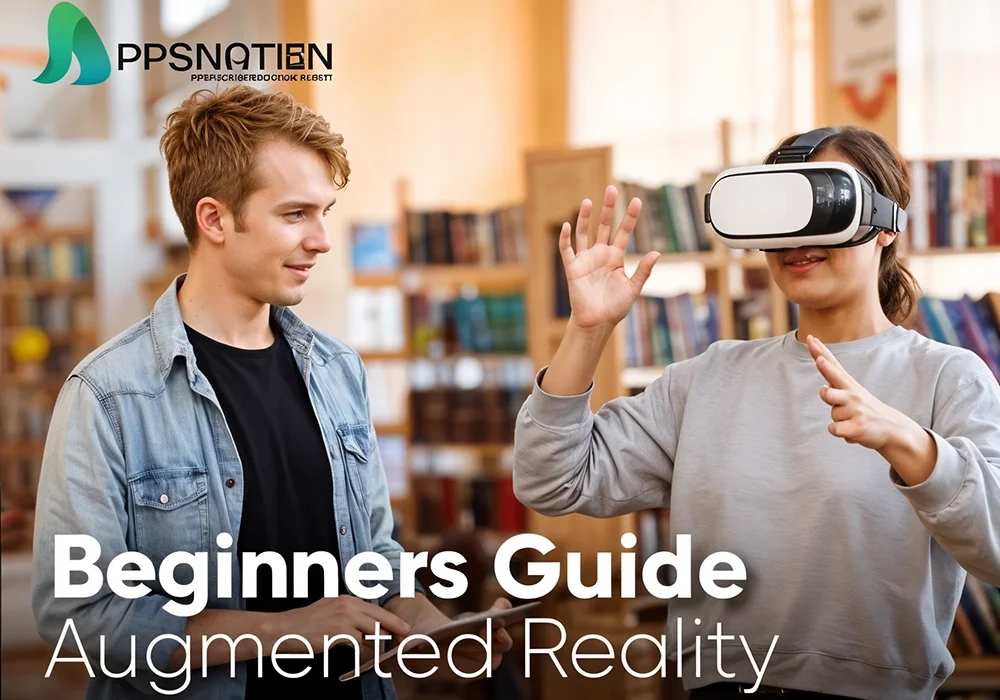Augmented reality (AR) is a captivating technology that blends the virtual world with the real world, offering users an enriched and interactive experience. Whether you’re a tech enthusiast or just curious about the latest advancements, this beginner’s guide will walk you through the essentials of getting started with augmented reality.
Table of Contents
| 1 | Introduction to Augmented Reality (AR) |
| 2 | How Augmented Reality Works |
| 3 | Types of Augmented Reality Devices
|
| 4 | Popular Augmented Reality Apps and Games
|
| 5 | Augmented Reality in Education and Training |
| 6 | Augmented Reality in Healthcare |
| 7 | Augmented Reality in Retail and Marketing |
| 8 | Augmented Reality in Entertainment and Tourism |
| 9 | The Future of Augmented Reality |
| 10 | Challenges and Limitations of Augmented Reality |
| 11 | Tips for Developing AR Applications |
| 12 | Ethical Considerations in Augmented Reality |
| 13 | Conclusion |
| 14 | Frequently Asked Questions (FAQs) |
Introduction to Augmented Reality (AR)
In recent years, augmented reality (AR) has taken the tech world by storm. It is a cutting-edge technology that superimposes digital content onto the real world, providing users with an interactive and immersive experience. Unlike virtual reality (VR), which creates a completely simulated environment, AR enhances the real world by adding computer-generated elements to it. This article will guide beginners through the exciting world of AR, exploring its functionalities, applications, and future possibilities.
How Augmented Reality Works
AR technology relies on various components to function effectively. It uses cameras to capture the real-world environment, sensors to track movement and orientation, and sophisticated algorithms to process the data and overlay digital content. This fusion of the virtual and physical realms allows users to interact with digital objects as if they were part of the real world. By understanding how AR works, developers can create more engaging and realistic AR experiences.
Types of Augmented Reality Devices
There are several devices that can deliver AR experiences to users, each with its own unique features and capabilities. Among the most popular AR devices are:
Head-mounted Displays (HMDs)
These are wearable devices like AR helmets or goggles that project digital content directly into the user’s field of view.
Smartphones and Tablets
Most modern smartphones and tablets come equipped with AR capabilities, allowing users to access AR applications easily.
AR Glasses
AR glasses, like Google Glass, are becoming more popular and offer a hands-free AR experience.
AR Contact Lenses
Although still in development, AR contact lenses hold the potential for seamless AR integration.
Popular Augmented Reality Apps and Games
AR is not limited to futuristic concepts; it has already permeated our daily lives through popular apps and games. Some well-known examples include:
Pokémon GO
This mobile game brought AR to the masses, allowing players to catch virtual Pokémon in the real world.
Snapchat Filters
Snapchat’s AR filters add entertaining visual effects to users’ selfies and videos.
IKEA Place
This app lets users visualize how IKEA furniture would look in their homes through AR.
Augmented Reality in Education and Training
AR’s interactive nature makes it a valuable tool for education and training purposes. From anatomy lessons with 3D models to virtual field trips and language learning, AR has the potential to revolutionize how we learn and acquire new skills.
Augmented Reality in Healthcare
The healthcare industry has embraced AR to improve medical procedures, training, and patient outcomes. Surgeons can benefit from AR overlays during complex surgeries, and medical students can practice on virtual patients to enhance their skills.
Augmented Reality in Retail and Marketing
Retailers are leveraging AR to offer customers a unique shopping experience. AR allows shoppers to virtually try on clothing and accessories, visualize furniture in their homes before purchasing, and explore products in a more engaging manner.
Augmented Reality in Entertainment and Tourism
AR has opened up new avenues for entertainment and tourism. From AR-powered museum tours to interactive theme park experiences, this technology is reshaping how people enjoy leisure activities.
The Future of Augmented Reality
The future of AR holds tremendous potential. As technology advances, we can anticipate smoother AR integration, enhanced AR glasses, and the possibility of AR contact lenses. AR will likely become an indispensable part of various industries, influencing how we interact with our surroundings.
Challenges and Limitations of Augmented Reality
While AR has promising applications, it also faces certain challenges. These include privacy concerns, potential addiction to AR experiences, and technical limitations that developers must overcome.
Tips for Developing AR Applications
For developers interested in creating AR applications, certain tips can enhance the quality and user experience. These include optimizing for various devices, focusing on user interactions, and ensuring that the AR content aligns seamlessly with the real world.
Ethical Considerations in Augmented Reality
As AR becomes more prevalent, ethical considerations come into play. These include addressing data privacy, ensuring inclusivity in AR design, and understanding the impact of AR on individuals and society.
Conclusion
Augmented reality is a revolutionary technology with vast potential across multiple sectors. From education to entertainment, healthcare to retail, AR’s impact is undeniable. As this technology continues to evolve, it will open up new possibilities and transform the way we perceive and interact with the world around us.
FAQ’s
Q: Is augmented reality safe for children?
Yes, as long as the content is age-appropriate and monitored by parents or educators.
Q. Are AR devices expensive?
The cost of AR devices varies, with some affordable options available for consumers.
Q: Can I create my own AR app?
Yes, there are AR development tools and platforms accessible to developers of all skill levels.
Q: Does AR require an internet connection?
Some AR applications may require an internet connection for certain features, but many can function offline.
Q: How accurate is AR tracking?
AR tracking has significantly improved over the years, providing more precise and reliable experiences.





